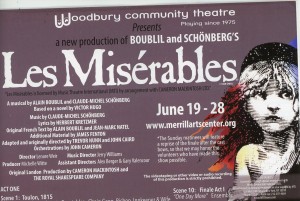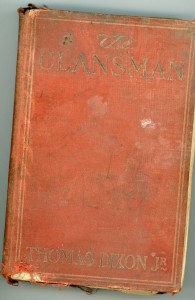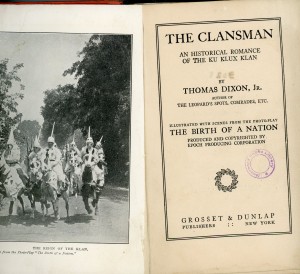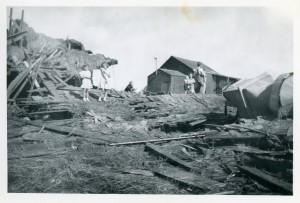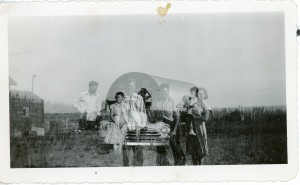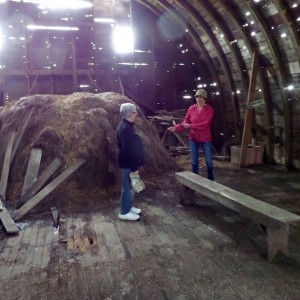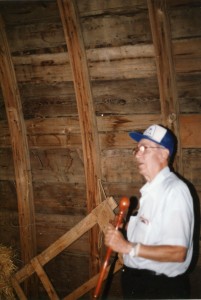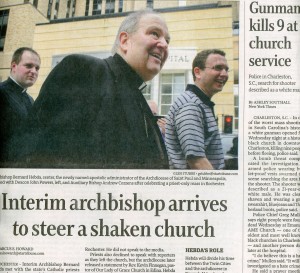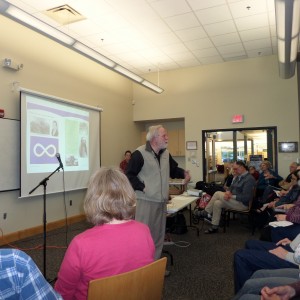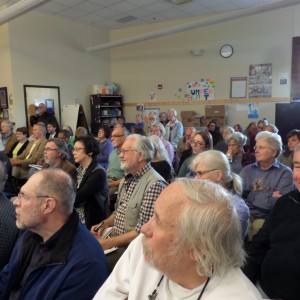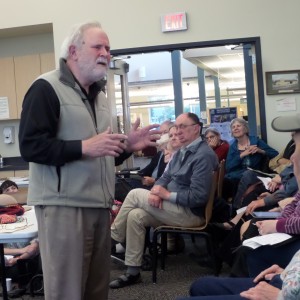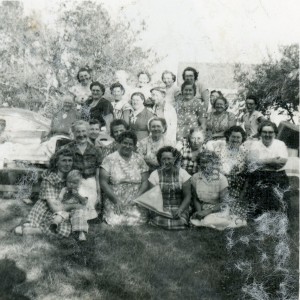(click to enlarge)
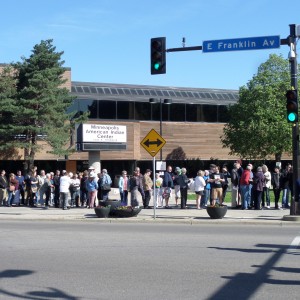
A crowd at the Commons, Sunday May 31, 2015 (see end of this post.)
On May 21, 27 of us were given a fascinating tour of the Commons we all share by
Jay Walljasper, and how we can constructively engage in and improve those Commons. For those who like to “cut to the chase”,
here is speaker Jay Walljaspers web-home; and
another website he strongly recommended. Jay Walljasper’s bio is
here. There is far more at these sites than I can easily describe in a few hundred words….
A simple definition of Commons that I wrote down during the presentation:
“assets that belong to all of us”.
While Mr. Walljasper’s take on Commons seemed mostly geographic (physical places, like sidewalks, parks and the like in which we live, together) I found myself thinking both more broadly and personally.
A simple interpretation of those assets we have in common (my own): in a real sense, everything belongs to all of us, and we are all accountable for the stewardship of those assets, everywhere.
Our planet is our common space.
In this society of ours which obsesses on individual rights for everything, including “property”, however defined, thinking in common about anything is a tall order. We jealously guard what we believe is ours.
Stewarding community assets as a larger society working together is a difficult concept.
It is easiest to do as the 27 of us did on May 21 in a safe meeting room deep inside a large church: gather as ” birds of a feather”, where people of like minds can safely listen to validation of their own world view, and discuss things with people who are likely in general agreement from beginning to end of the conversation. (Eight of those in the room on May 21 were people that I know quite well – “birds of a feather….”)
In my opinion, those of us in the room for the meeting on “the commons” were not in a “commons”. The commons was outside that room, where each of us live amongst differences.
Where the Commons really is, is out in the larger messier world. That often is a very “sticky wicket”. We aren’t all alike.
*
We all have “Commons” that we enter every day.
For me, it’s places like the local Caribou Coffee; the neighborhood of 96 homes I live in within a larger suburb; the local park in which I walk about an hour almost every day; the post office line I’m frequently part of; the local restaurant for afternoon coffee; my Church, the Basilica of St. Mary, particularly the “Commons” for coffee and donuts afterwards where, odds are, I’ll be visiting with somebody I’ve not met before.
Etcetera.
Examples abound, for everyone.
Coffee shops came up in the session as not being examples of Commons, since people there are often solitary individuals, as I would appear to be, most of the time, reading, writing, thinking.
Not so fast.
This past week I visited a friend [see Postnote] I got to know at that coffee shop who is dying rapidly in a local hospital. He and I got to be friends over the past 15 years, only because we frequented the same place for perhaps an hour most every day.
This past Saturday, in the same coffee shop, seven guys involved in Bible Study sat at the big table next to me doing what Bible Study groups do. There were “the usual suspects” there, but frequently some new person stops by. They are having a meeting in the “Commons”.
On this particular day one of them took apparently serious disagreement with someone else over the interpretation of some Bible passage, and it clearly caused discomfort. He left the gathering early. I wonder if he’ll be back today, when I sit in my regular place, and they gather at their regular place next table over.
I wonder how his disagreement impacted the other individuals in the group. Obviously, I noticed it, without even knowing what text they were talking about at the time he got upset.
A good example of “Commons” would be this very thing: a negotiation of differences in a public place. We are not all alike.
*
One of the persons at Walljasper’s talk was my friend, Donna, who’s heading a committee which is actively promoting changing our behaviors on disposal of waste at our very large Church.
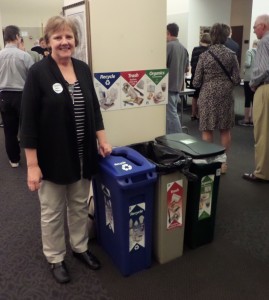
Donna aka “the Garbage Lady” May 3, 2015
Recently, she was distributing stickers pronouncing “Let’s Talk Trash”, so I dubbed her “the Garbage Lady”.

One of her first learnings – an obvious one – is that when people are confronted with three choices for their trash, they don’t necessarily follow simple directions of where to put their half-eaten donut or whatever. She and her colleague committee members were, in a sense, monitoring (and teaching about) trash behavior, and it can be frustrating: someone puts trash that should be in bin “A” when it should be in bin “C”…. It is difficult to have even a gentle conversation about this, with a stranger, but this they were doing.
Donna’s committees initiative will succeed long term, but it’s a long and frustrating process educating the people in the “Commons” to change their behaviors related to waste.
*
Then, there’s the much larger scale of “commons”:

On a sidewalk near the American Indian Center, Minneapolis, May 31, 2015
Last Sunday I went over to Minneapolis to see if I could get into a local appearance of Vermont Senator Bernie Sanders, newly announced Democrat candidate for U.S. President in 2016. I got there 45 minutes early, and it was clear that the meeting place would be packed long before my part of the line would reach the door, so I took snapshots instead.
It was a beautiful day, and pleasant for standing in line.
But, I thought, the real work for the folks who really like Bernie Sanders for President will come down the road, “in the Commons” of politics in this very complex society of ours.
Bernie Sanders knows this. So do the other candidates.
It is not enough to attend a speech, say it was good, or not, and leave….
How will the people who stood in line that one time to see a visiting celebrity become engaged over the long months leading to election 2016? That’s the important question.
It is not enough to express support for a candidate you like. Sooner or later will come a time where these folks will most likely have to choose between two lesser than perfect options, and hopefully they’ll hang in there, and make the compromises necessary to make a wise choice not only for themselves, but for us all.
Yes, there is a Commons, everywhere. It is a place of disagreements to be negotiated; not a place where only agreement is acceptable.
On the Commons is where the results happen.

Comments on the ‘express yourself’ blackboard at Woodbury Caribou Coffee. Note the question of the day at the center of the blackboard.
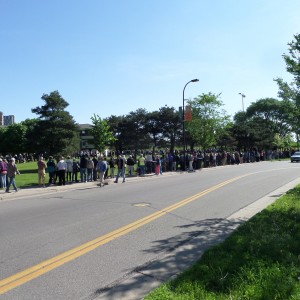
May 31, 2015. Where are you in the commons of politics?
Yesterday I went to the funeral of my coffee shop friend. It was as all funerals are, a celebration of life. Three of we regulars (Caribou Coffee at Town Centre in Woodbury) were there. I learned a bit more about John.
Front and center on the display table about John’s life was a simple recyclable Caribou cup someone had offered.
Nice touch.
The missing guy at the Bible Study? Still missing….
The Commons can be that way.
